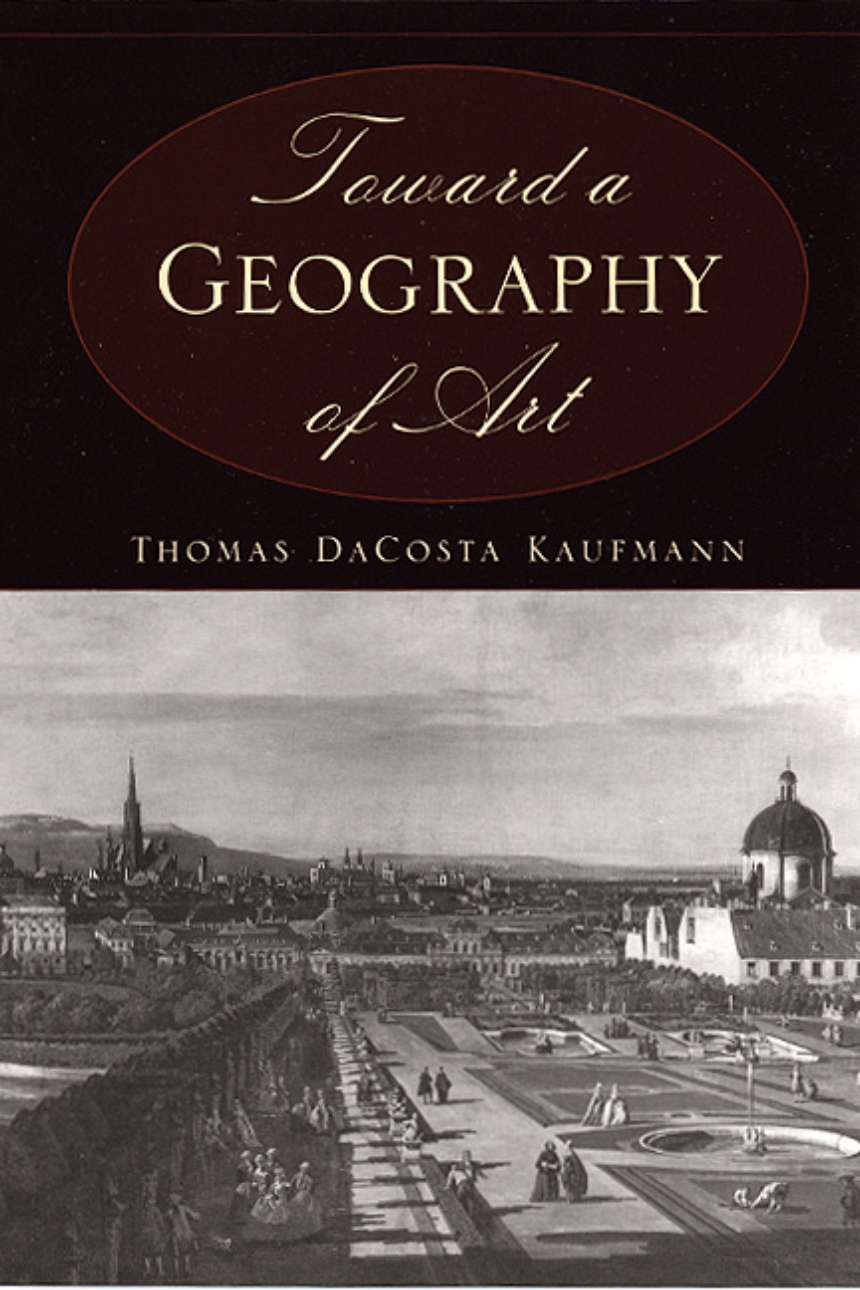Toward a Geography of Art
Art history traditionally classifies works of art by country as well as period, but often political borders and cultural boundaries are highly complex and fluid. Questions of identity, policy, and exchange make it difficult to determine the "place" of art, and often the art itself results from these conflicts of geography and culture. Addressing an important approach to art history, Thomas DaCosta Kaufmann’s book offers essays that focus on the intricacies of accounting for the geographical dimension of art history during the early modern period in Europe, Latin America, and Asia.
Toward a Geography of Art presents a historical overview of these complexities, debates contemporary concerns, and completes its exploration with a diverse collection of case studies. Employing the author’s expertise in a variety of fields, the book delves into critical issues such as transculturation of indigenous traditions, mestizaje, the artistic metropolis, artistic diffusion, transfer, circulation, subversion, and center and periphery. What results is a foundational study that establishes the geography of art as a subject and forces us to reconsider assumptions about the place of art that underlie the longstanding narratives of art history.
Toward a Geography of Art presents a historical overview of these complexities, debates contemporary concerns, and completes its exploration with a diverse collection of case studies. Employing the author’s expertise in a variety of fields, the book delves into critical issues such as transculturation of indigenous traditions, mestizaje, the artistic metropolis, artistic diffusion, transfer, circulation, subversion, and center and periphery. What results is a foundational study that establishes the geography of art as a subject and forces us to reconsider assumptions about the place of art that underlie the longstanding narratives of art history.
504 pages | 91 halftones | 6 x 9 | © 2004
Art: Art Criticism, Art--General Studies
Geography: Cultural and Historical Geography
Reviews
Table of Contents
List of Illustrations
Acknowledgments
Introduction
PART ONE: HISTORIOGRAPHY
1. The Historiography of the Geography of Art: From Antiquity to the End of the Eighteenth Century
2. The Formulation of a Geography of Art: From the End of the Eighteenth to the Twentieth Centuries
3. From Kunstgeographie to Visual Culture: Geographical Ideas about Art from the First World War to the Present
PART TWO: EUROPE
4. Identity in Artistic Geography? Some Considerations of Early Modern Europe
5. Artistic Regions and the Problem of Artistic Metropolises: Questions of (East) Central Europe
6. Dimensions of Diffusion—The Example of Italian Sculptors and Sculpture Outside Italy (Chiefly in Central Europe): Problems of Approach, Possibilities of Reception
PART THREE: THE AMERICAS
7. An Introduction to the Artistic Geography of the Americas: The Limits of Kublers Legacy
8. Circulation East and West: Jesuit Art and Artists in Central Europe, and Central European Jesuit Artists in the Americas
9. Mastery or Mestizaje? Placing an Interpretation of the Façade of San Lorenzo, Potosí
PART 4: JAPAN: THE LIMITS OF DIFFUSIONISM
10. Designed for Desecration: Fumi-e and European Art
Instead of a Conclusion: Toward a Geography of Art
Notes
Index
Acknowledgments
Introduction
PART ONE: HISTORIOGRAPHY
1. The Historiography of the Geography of Art: From Antiquity to the End of the Eighteenth Century
2. The Formulation of a Geography of Art: From the End of the Eighteenth to the Twentieth Centuries
3. From Kunstgeographie to Visual Culture: Geographical Ideas about Art from the First World War to the Present
PART TWO: EUROPE
4. Identity in Artistic Geography? Some Considerations of Early Modern Europe
5. Artistic Regions and the Problem of Artistic Metropolises: Questions of (East) Central Europe
6. Dimensions of Diffusion—The Example of Italian Sculptors and Sculpture Outside Italy (Chiefly in Central Europe): Problems of Approach, Possibilities of Reception
PART THREE: THE AMERICAS
7. An Introduction to the Artistic Geography of the Americas: The Limits of Kublers Legacy
8. Circulation East and West: Jesuit Art and Artists in Central Europe, and Central European Jesuit Artists in the Americas
9. Mastery or Mestizaje? Placing an Interpretation of the Façade of San Lorenzo, Potosí
PART 4: JAPAN: THE LIMITS OF DIFFUSIONISM
10. Designed for Desecration: Fumi-e and European Art
Instead of a Conclusion: Toward a Geography of Art
Notes
Index
